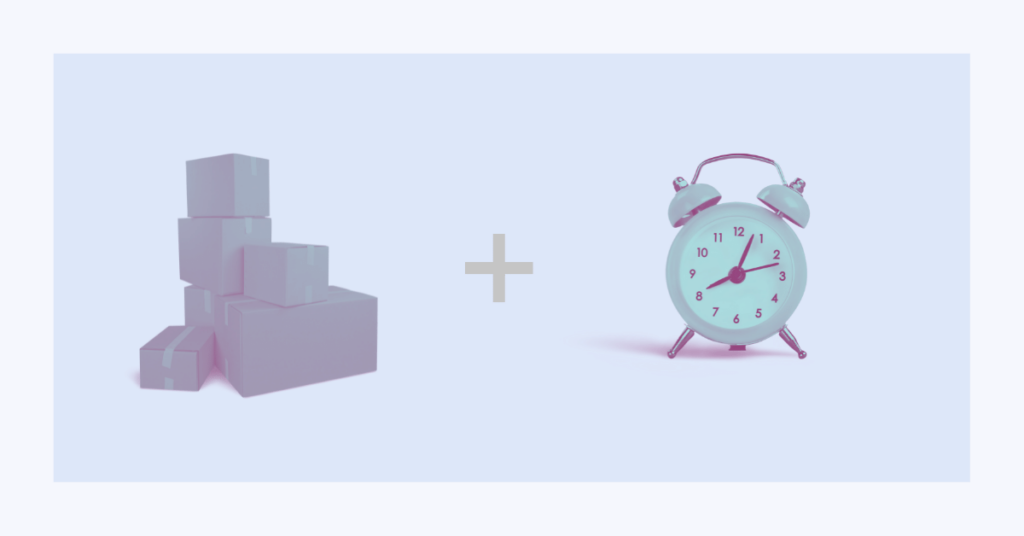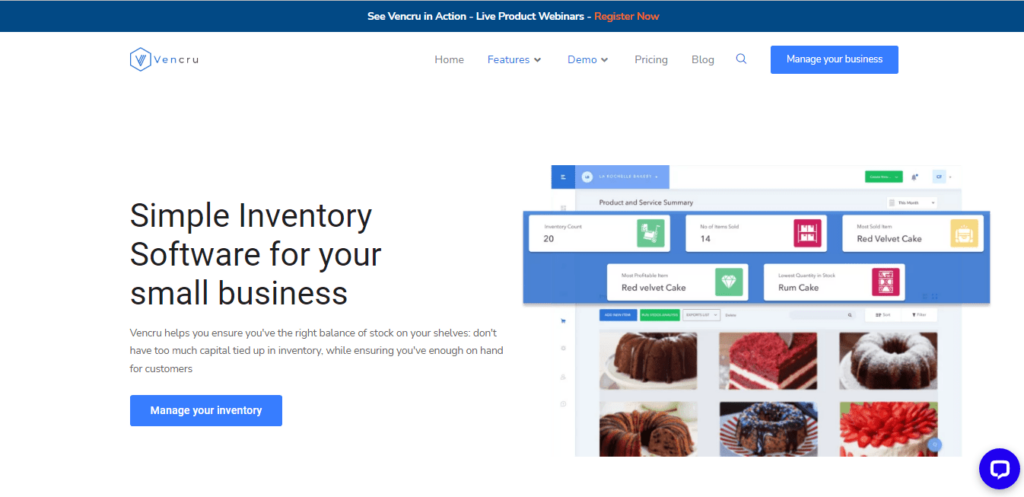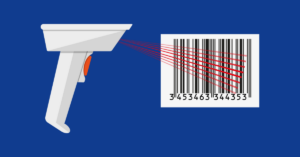The top priority of retail inventory management is to reduce the cost of holding inventory. However, while still keeping stock levels consistent and making products available to customers faster and on-demand.
Meanwhile, we can identify inventory management as the core of a successful retail business. This requires inventory visibility. For example,
-
- Knowing what to order
- When to order
- How much to order
- Where to store stock
How Does Retail Inventory Management Work?
With a unique managerial system or database, it centers on minimizing the cost of holding inventory. This is by informing you when it’s time to either restock or purchase more materials to manufacture them. Therefore, helping you maintain optimum inventory levels and minimize costs.
Retail inventory management (RIM) works in five ways:
- Avoid experiences of damaged goods
- Prevent dead stock
- Save on storage costs
- Improve cash flow
- Optimize fulfillment
Avoid experiences of damaged goods
Damaged goods or products put your business at a loss. So, being unable to monitor your inventory and what product is close to expiration is not great for business.
If your business is in the sale of products that have an expiry date. For example, sausages, chocolates, biscuits, teas, perishable items, etc. There is a great chance it will damage if not sold before its expiration date.
Therefore, RIM works by helping you avoid unanticipated spoilage or damages and losses.
Prevent dead stock
Experiencing dead stock is sometimes inevitable for small businesses that do not have inventory management software. Dead stocks are products that cannot be sold. However, not because they are expired, but, outdated or out of season, style, or possibly become immaterial.
In accepting a painstaking RIM strategy provided by Vencru, you can address this costly inventory error.
Save On Storage Costs
Avoiding storing products that will shortly become difficult to sell will save you money and unexpected losses.
Storing much product all at once leads to an increase in the cost of storage.
Using RIM in analyzing your stock levels and ascertaining the value and timeline of each product puts you on a positive path to business success.
Improve Cash Flow
Every business owner intends to improve and boost their cash flow by factoring inventory into your cash flow management. This affects sales and expenses, for instance.
Inventory management leads to better cash flow management. On the other hand, based on your sales report, you can project when you’ll run out of stock. So, you get to replace it before that point.
Therefore, RIM software, like Vencru, assists you in not losing sales, but, lets you plan.
Optimize Fulfillment
Proper management of your inventory can optimize fulfillment in your business. Therefore, making goods available to your customers whenever they request them, and at a lesser price.
For instance, getting your stores opened at different locations. However, closer to your target audience to reduce the cost of delivery or transportation.
So, with the aid of RIM software, like Vencru, usable products are reentered into circulation or re-displayed in your online store.
8 Steps In Retail Inventory Management
- Create a centralized record of all products
- Pinpoint stock location
- Carry out accurate inventory counts
- Combine reports on sales and inventory
- Establish a purchasing process
- Structure a stock receiving system
- Organize a return procedure
- Track your inventory KPIs
Create A Centralized Record Of All Products
Creating a centralized record of all products is essential if you sell through e-commerce or point-of-sale. Most importantly, when you add new products with the details listed below, put them into your inventory record.
Here are the details:
- Name of product
- Stock-keeping unit (SKU)
- Brand
- Variables such as size, retail price, product category, lot number, location (on the shelf/store), and expiration date.
- Vendor
- Vendor SKU
- Wholesale cost
- Minimum reorder amount
- Economic order quantity (EOQ)
- Case quantity amount
- Inventory available
- Reorder lead time
However, whenever information such as a vendor or wholesale cost changes, do update it.
Pinpoint Stock Location
Pinpointing stock location can be complex with multiple sites and omnichannel sellers that might have inventory. For example, in warehouses, stockrooms, distribution centers, etc. All of which have a section, a shelf, and a rack. However, incorrectly placed and overlooked products represent missed sales and lost revenue.
The use of retail inventory management software like Vencru helps us avoid misplaced inventory. With features like barcodes, tags, and labels, for instance.
Carry Out Accurate Inventory Counts
Counting your stocks at different intervals is significant for accountability and quality stock analysis. However, a retail inventory management system makes this process easier and more fast-paced. Because you only need to double-check your data rather than start from the very beginning.
Complex inventory requires more attention to detail and regular counting. So, you’d need to be specific about what your business needs.
Combine Reports On Sales And Inventory
A trusted integrated sales (POS) and inventory management system equips you with great turnover rates. To clarify, using product data to decide when, the amount to reorder, and when to offer promotions, discounts, or incentives.
Establish A Purchasing Process
With an electronic purchasing or ordering system like Vencru, your sales level, stock levels, and turnover rates are in line. Therefore, you can set inventory levels for individual products that give rise to alerts for reorder. In addition, prioritize purchases based on a product’s demand and profitability.
Above all, establish or structure a purchase order.
Structure A Stock Receiving System
Verification of new stock is essential. Therefore, it’s best to check each delivery against your purchase order to verify if the contents match your request.
Count and confirm product types and verify if any are damaged. Most importantly, following up with vendors on any issue is critical, then entering the new products into inventory after counting.
On the other hand, adding barcodes and price tags should come in afterward.
Organize A Return Procedure
As a retail store owner, you’ll encounter customers returning some products for reasons you must verify. For example, the reasons could be expiration, repairs, damages, defective, and much more in some cases.
All of these need your detailed attention and unbiased decision to be solved. Be sure to cover the loss or forward it to your suppliers – if it’s on their path. You could also send it in for repairs.
Track Your Inventory KPIs
To ensure the success and growth of your business, you need to keep track of some key performance indicators. In other words, doing so will enable you to make smart business decisions.
Benefits Of Investing In A Retail Inventory Management Solution
For example, some benefits you stand to gain are as follows:
- Trouble-free report generation
- Performance measurement with KPIs
- Reliable counting of inventory
- With the use of barcodes or RFID, you can successfully trace your merchandise
- Greater forecasting
- Simple execution of promotions and discounts
- Support for dynamic and strategic pricing
- Detailed documentation of shipping records
How Can Vencru Help You Transform Your Retail Inventory Management?
Vencru is the easiest invoicing, accounting, and POS software – with unique features and benefits. You are 100% sure to perform inventory management, bookkeeping, retailing services, manage your clients, and manage your employee sales. All in one place.
With features like:
- Get Your Accounting Reports
- Inventory Management
- Expenses Tracking
- Send Invoices and Receipts
- Customer Relationship Management (CRM)
Vencru offers tools for transforming your inventory management and achieving maximum efficiency levels.
Read more on tips on how retail stores track their inventory and increase their success levels.
Final Takeaway
Retail inventory management centers on minimizing the cost of holding inventory by informing you when it’s time to restock products. In the same vein, to purchase more materials or resources to manufacture them. This helps you maintain optimum inventory levels and minimize costs.
Sign up with us now! And make sure you stay tuned to our blog and get amazing resources to help you navigate the market. Good luck!









